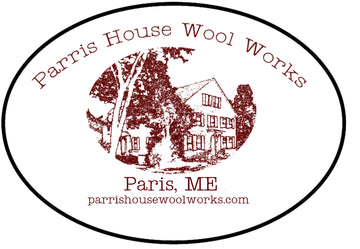Cold Process Lavender Soap
Hi! Jen from Parris House Wool Works here. I have been wanting to try my hand at homemade cold process soap for several years now but haven't summed up the courage until recently. Since there is lye involved, the thought of blowing up my kitchen or melting my skin off, kept me from taking the plunge. What changed? I turned 40. I have crossed the threshold and entered the land of I-Could-Die-Any-Day-Now. Life is really too short to worry so much. Don't you think?
I STILL didn't start immediately. It took me about 3 weeks or so to choose a recipe, order the supplies, and watch about 200 YouTube videos....and then watch them all over again.
As you can see, I was PREPARED and probably bought too much.
One of my favorite scents is lavender. I just planted it in my garden this year so it hasn't taken off yet so I ordered this French Grade 1 lavender from www.brambleberry.com . Bramble Berry is where I ordered most of my soap supplies including a great 2 lb mold with silicon liner.
I also used lavender essential oil, shea butter, virgin coconut oil, sustainable palm oil, and extra virgin olive oil.
It's very important to measure the ingredients very carefully so I used this digital scale that I purchased from Wal-Mart.
Measuring out the palm, shea, and coconut oil. I read that you don't want to add too much coconut oil as some people may be sensitive to it.
One of my favorite things in the world EVOO. I was concerned this would cause my soap to turn a green color but it didn't effect the final product.
It is important to wear gloves, use safety goggles, and also keep a container of white vinegar nearby in case you splash some lye on yourself because it stops the burning.
I ordered lye flakes from Bramble Berry. It was so easy to pour and measure. Remember to always add LYE TO THE WATER. Never add water to the lye as it can cause an explosion. Make sure when you mix the lye water to do so outside or in a well ventilated area and avoid breathing in the fumes.
I sprinkled lavender buds in the bottom of my mold so that they would coat the bottom of the bars.
Melting the hard oils.
I put the lye water in a cold water bath. You want your hard oil and lye water temperatures to be within 5 degrees of one another before mixing.
Cooling the hard oils.
After mixing the oils and the lye water with a stick blender, I added the lavender essential oil and the buds. You know the soap is ready to pour in the mold when you trace. Trace is the the trails on the top of the soap that form when you drizzle some over the surface of the mixture.
Poured in the mold and sprinkled lavender buds over the surface. I also sprayed the top of my soap with 91% alcohol to prevent soda ash from forming after it hardens.
It's time to put the soap to bed. It must sit for at least 24 hours before cutting.
The final bars! Cold process soap needs to cure for 4-6 weeks before using.
The soap recipe I used can be found at www.how2soap.com.
Check Parris House Wool Works for homemade, 100% natural, no dye or artificial fragrance soap for sale later this fall!
- Parris House Wool Works

















Comments 0